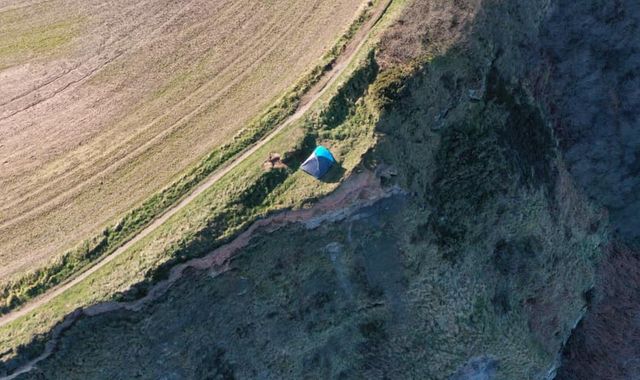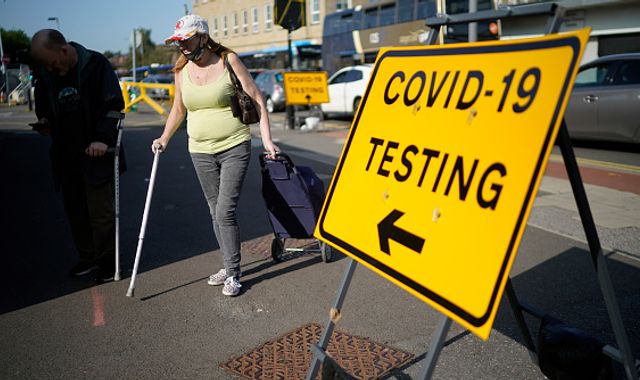Coronavirus: Tougher rules for Liverpool, Warrington, Hartlepool and Middlesbrough – but one mayor vows to defy them
Written by News on 02/10/2020
Tougher coronavirus restrictions are being imposed on four new areas – but one mayor says they are “damaging” and he will not accept them.

Health Secretary Matt Hancock has urged residents in the Liverpool city region, Warrington, Hartlepool and Middlesbrough not to socially mix with those from other households – except in outdoor spaces like parks and outdoor hospitality settings.
And he asked them to avoid “all but essential travel” – meaning people can still go to work and school.
The changes will come into effect from 12:01am on Saturday.
Mr Hancock said the measures are needed because “in some parts of the country, the virus is spreading fast”, with cases shooting up to 268 per 100,000 people in Liverpool.
But the second spike in COVID-19 cases is “highly localised”, he claimed, adding recent actions are having a “positive impact”.
“What we’re doing to respond to these awful circumstances is starting to work, so don’t let up,” he said in a Commons statement on Thursday.
“Let’s all of us keep doing our bit and one day, over this virus, we will prevail.”
Steve Rotheram, the metro mayor for the Liverpool city region, said the measures are a “step in the right direction” but added he was unsure “whether they are enough”.
He called on the government to publish its scientific evidence and provide “substantial” economic support for already-struggling firms.
But the restrictions were branded “unacceptable” by Andy Preston, the independent mayor of Middlesbrough.
He said he had called for the government to impose some new measures but the ones announced go “too far” and are “unacceptable”.
“We went to the government with fantastic, intelligent, pragmatic proposals to keep people safe, protect our society and make sure people don’t get lonely,” Mr Preston told Sky News.
“We weren’t listened to…
“Obviously if there is a law then I will follow the law and nobody should break the law.
“But as things stand, I do not accept these proposals – they are unnecessary, they go too far, they’ll damage mental health and they’ll kill viable jobs.”
Mr Preston added it was “madness and completely unnecessary” to stop people from different households having distanced meet-ups in COVID-secure cafes that would be “pushed out of business”, leading to job losses, under the government’s orders.
“We’re not soft on COVID here, we’re strong on COVID – but we need to find a way of living with it, working with it and saving jobs,” he said.
Labour’s shadow health secretary Jon Ashworth earlier suggested the local lockdown approach is not working.
He said many regions subject to them are seeing cases rise not fall, so asked: “Why are the moles not getting whacked?”
Prime Minister Boris Johnson’s spokesman has denied he ignores local leaders.
“Our approach in tackling the second wave of the virus is suppressing the spread of the virus while keeping the economy as open as possible,” he said.
Meanwhile, Labour leader Sir Keir Starmer has appeared to challenge the 10pm curfew for pubs, bars and restaurants – after multiple reports of people spilling out of venues at the same time.
“We are supporting the package the Government has put in,” he said. “But I think [Manchester mayor] Andy Burnham in particular has questioned whether the 10pm curfew is working as intended.
“He has pointed, understandably, to lots of people coming out of venues at the same time.
“I suggest it might be a good idea for the government to reflect on what Andy Burnham is saying and ask themselves the question whether that should stay in place.”
At least 16 million people are now living under some form of enhanced restriction, on top of the national measures in place across the UK.
Analysis: England’s coronavirus divide may be one of income
By Thomas Moore, science correspondent
The map of the COVID-19 epidemic now reveals a striking north-south divide in England.
Rates are far higher across a broad swathe of the North West, Yorkshire and the North East than they are in the home counties and the South West.
That may be in part because the virus remained at a slightly higher rate in some parts of the North West, even at the end of the long spring lockdown.
Once the brakes were taken off and we all started mixing again the virus took off sooner and faster in those areas before spreading regionally.
But that doesn’t completely explain the sharp rise.
The higher rate of deprivation in large urban areas is also likely to be a significant factor.
People living in less affluent areas are more likely to live closer together, with multiple generations under one roof.
They’re more likely to have jobs with more interaction with lots of other people, such as bus drivers, or jobs in confined spaces, such as food processing plants.
And they are also more likely to be in poor health with higher rates of heart disease and diabetes.
All that increases the risk of the virus spreading and affecting more vulnerable people.
When you look more closely at the map of infection rates, and zoom in on London, there are parts of the east that are more badly affected. Those are some of the most deprived boroughs in the capital.
So what appears at first to be a geographical divide may in fact be one of income.
(c) Sky News 2020: Coronavirus: Tougher rules for Liverpool, Warrington, Hartlepool and Middlesbrough – but one mayor vows to defy them






